Last week’s U.N.-sponsored report on tracking Sustainable Development Goal 7 brought some good news. The number of people without access to electricity has fallen from 1.2 billion in 2010 to 789 million in 2018. But the report also noted that many public facilities still lack access. The most recent cross-country data on electricity access in health facilities suggests that 25 percent of health clinics in six surveyed countries (Cambodia, Myanmar, Nepal, Kenya, Ethiopia, and Niger) lack any electricity access at all—virtually the same ratio reported in a similarly comprehensive cross-country survey nearly 10 years ago. Furthermore, only 28 percent of clinics and hospitals report having reliable electricity.
Reliable power is critical for effective responses to COVID-19 and other diseases. Virtually all diagnostic tests for active COVID-19 infection currently require electricity. Patients who need further diagnosis (e.g., pulse oximetry) or treatment with ventilators or oxygen masks have to be placed in clinics with reliable power; outages for even a few minutes can be life-threatening. Besides, electricity powers sanitization and cleaning equipment like autoclaves and air filtration and, in some places, pumped clean water. These are necessary for preventing the spread of infection among patients and medical workers.
Some African countries have demonstrated remarkably successful responses to COVID-19, leveraging institutions and assets built during previous polio and Ebola outbreaks. Still, improving power reliability to health facilities should be a big part of the short-term policy response to COVID-19 in sub-Saharan Africa. Over the longer term, better access to reliable and sustainable electricity at health facilities is central to programs for increasing health system resiliency and quickening economic recovery.
The power to detect, treat, and vaccinate
Electricity is just one of the many resources that enable health systems to detect, prevent, and treat infectious diseases; clean water, decent equipment, qualified staff, and medical supplies are also essential. But electricity generally has a lot to do with how effectively these resources work.
Problems with diagnosis and tracking in individual clinics can quickly lead to regional and national emergencies. Disease surveillance—the “eyes and brain” of infectious disease response—relies on electricity-dependent equipment for timely testing and sharing of information. Health facilities with limited access to power and communications systems inevitably struggle with diagnosis and transmission of case reports to central authorities, rendering them blind and mute. The results are delays in detecting and responding to outbreaks early, before they spin out of control.
A study of tuberculosis clinics in southwest Ethiopia found, for example, that in places with frequent power interruptions, TB diagnostic tests that normally provide results in two days took more than a week to process. This led clinic staff to refer patients to more distant health facilities, requiring patients to ride on crowded public buses and risking more transmission. Others, unable to afford the travel or time away, simply returned to their communities, risking their own health and that of others.
Another example: A study of 33 hospitals in 10 countries found that unreliable power was the single most common cause of medical equipment failure. Facilities with on-demand power are significantly less likely to have medical equipment with high levels of contamination. But electricity access affects human capital, too. Health care workers prefer living in villages with access to electricity, and this in turn reduces absenteeism. Research on job satisfaction among health care workers finds that electricity deficits turn simple tasks like putting in an IV line into frustrating challenges. In the study, nurses and doctors expressed fear for their own lives as they handled blood samples and other potentially contaminated fluids when working in the dark.
Vaccines commonly spoil if not kept between 2 and 8 degrees Celsius, so powering a cold chain will be critical to delivering a COVID-19 vaccine when it becomes available, as well as safely moving medications, biological samples, and blood for transfusions. In many parts of sub-Saharan Africa, health workers pack vaccines for diseases such as polio and measles into portable coolers and travel across unpaved roads—a major challenge that emerged in delivery of the Ebola vaccine in West Africa—to villages where they go door to door to vaccinate children. They can go only as far as the ice will last.
Vaccinations against diseases like the coronavirus that can readily mutate must be adapted regularly or given multiple times, underscoring the importance of last-mile electrification. And even before vaccines leave a refrigerator, unreliable power can render them unusable. The WHO estimates that nearly 50 percent of freeze-dried and 25 percent of liquid vaccines are wasted each year, in large part due to cold chain electricity disruptions.
Even after the current crisis abates, lack of access to reliable power will pose challenges. Low water levels at Zimbabwe’s largest hydroelectric plant last year led to routine power cuts at virtually every clinic outside the largest referral hospitals, so pregnant women across the country were asked to bring candles to provide light for giving birth. In many countries, reports of surgery by light from candles, kerosene lamps, and mobile phones when the power goes out are all too common.
Off-grid systems should be in every pandemic fighter’s playbook
Extending electrical grids to thousands of clinics in rural communities will take years if not decades. Fortunately, the options for rapidly deployable energy solutions have increased a lot in recent years. Massive declines in solar and battery costs combined with the advent of remote management systems have created a vibrant off-grid energy sector that already provides services to over 250 million Africans. While most customers use small solar lighting devices, larger solar and solar-diesel systems can provide a reliable, grid-like energy experience for a range of applications that includes health care facilities.
Off-grid systems are forecast to be the low-cost electricity solution for more than 70 percent of rural people currently lacking access. And they can be quick to install. In Nigeria, for example, the Rural Electrification Agency and private firms recently constructed four solar minigrids at hospitals treating COVID-19 patients in just two weeks. These systems, which can reliably accommodate the needs of hundreds of patients, will outlast the pandemic, with operational lifespans pushing 20 years if they are properly maintained and batteries are replaced every five to seven years.
Now may be the ideal time to commit resources to power off-grid health facilities for another reason: The off-grid sector is facing unprecedented financial pressure. The economic crisis is making it difficult for African energy customers to pay their bills. New orders are drying up, investment is slowing, and many of these companies are running out of cash. Nearly 370,000 jobs are at risk sector-wide.
Governments and donors are recognizing the opportunity to put this slack capacity to work to build resilient health care systems. Notably, USAID is supporting off-grid developers to provide reliable energy to clinics across sub-Saharan Africa. The World Bank and its partners are looking at how to redirect energy programming to incorporate health facility needs.
Electrifying health care
Meeting short- and long-run health sector needs requires systemic planning across sectors and better data. As frightening as it is that 10 countries in Africa have no ventilators whatsoever, this is just one symptom of the institutional and infrastructure gaps that existed well before the present crisis.
In many cases, the authorities simply lack information about which clinics suffer from electricity deficits. The WHO, World Bank, USAID, Gavi and national governments all collect data on health centers’ energy access, but data are absent in some countries and nearly a decade old in others. Better-integrated governments can be a big help; one in-progress survey we know, in Uganda, is supported by both the ministry of energy and ministry of health. The WHO, IRENA, World Bank, and Sustainable Energy for All plan to commission a global assessment of data on electricity access, reliability, and demand in health care facilities. This will inform decisionmaking by serving as a benchmark against which progress in electrifying health care facilities can be measured.
We need more research on effective ways to electrify health facilities. A review of nearly 80,000 papers on energy access and transitions identified fewer than twenty that discuss how energy services enhance health care. With competing demands in low-income countries, a strong evidence base is needed to galvanize high-level policy and financial support and break down silos across the energy and health sectors.
COVID-19 has exposed the interrelated nature of crisis response and recovery. In Africa, where so many challenges lead back to energy access, gaps in basic infrastructure like electricity create serious vulnerabilities. Remedying electricity access in health facilities in response to COVID-19 brings us a step closer to ending the vicious cycle of panic and neglect in preventing deadly diseases.
The authors gratefully acknowledge assistance and comments from Luc Severi (SEforALL); Gavin Yamey, Jonathan Phillips, and Marc Jeuland (Duke); and Michael Emch and Jonathan Parr (UNC).
The Brookings Institution is committed to quality, independence, and impact.
We are supported by a diverse array of funders. In line with our values and policies, each Brookings publication represents the sole views of its author(s).

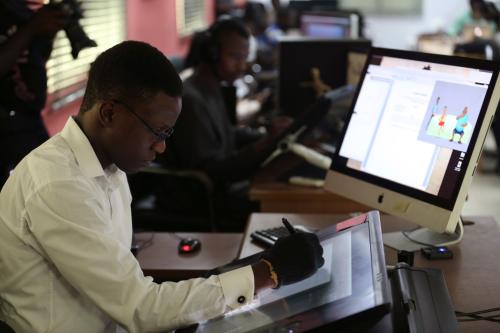
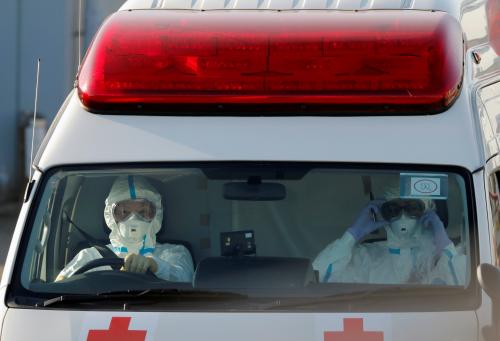
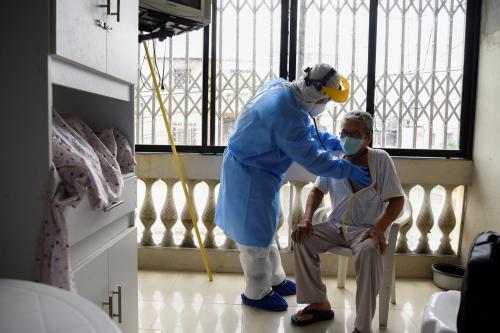

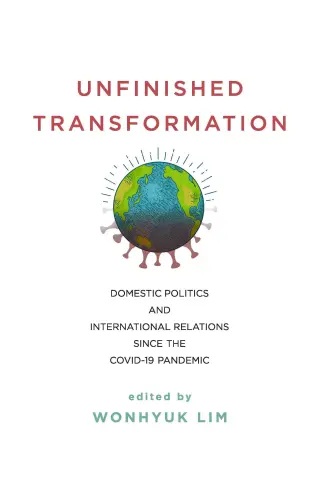





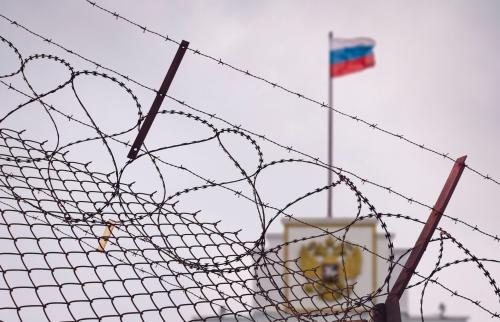


Commentary
You can’t fight pandemics without power—electric power
June 5, 2020